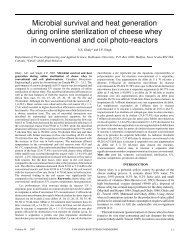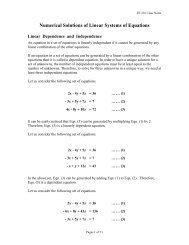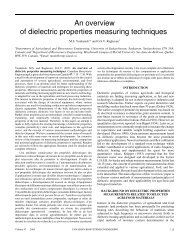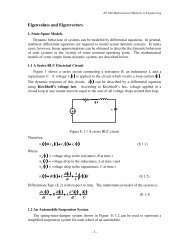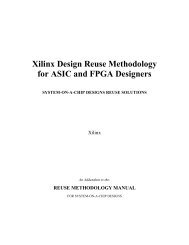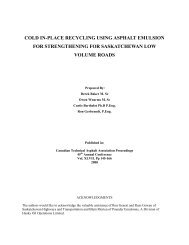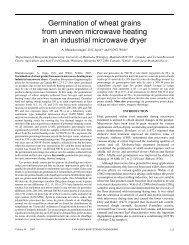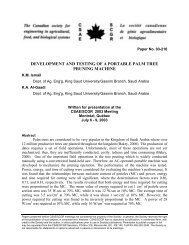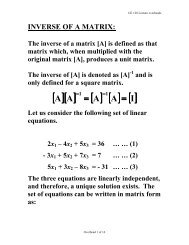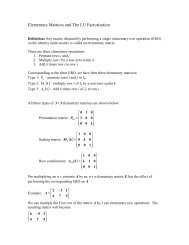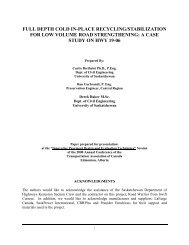comparison of alternative asphalt concrete rut characterization
comparison of alternative asphalt concrete rut characterization
comparison of alternative asphalt concrete rut characterization
You also want an ePaper? Increase the reach of your titles
YUMPU automatically turns print PDFs into web optimized ePapers that Google loves.
BERTHELOT, CROCKFORD & LYTTON 16Table 17 summarizes the cumulative repeated shear strain at 20,000 load cycles <strong>of</strong> the Radisson SPS-9A<strong>asphalt</strong> <strong>concrete</strong> mixes. A statistical analysis was performed at a 95 percent confidence level to evaluatethe significance <strong>of</strong> the cumulative shear strain measurements at 20,000 load cycles across the RadissonSPS-9A <strong>asphalt</strong> <strong>concrete</strong> mixes. A one-way analysis <strong>of</strong> variance concluded that Radisson SPS-9A <strong>asphalt</strong><strong>concrete</strong> mix type had a significant effect on the mean cumulative shear strain measurements at 20,000load cycles. Duncan's pairwise <strong>comparison</strong> determined that the mean cumulative shear strainmeasurements at 20,000 load cycles <strong>of</strong> mix 900961 was significantly different from all other mixes;however, mixes 900901, 900903, 900959, and 900960 were not significantly different; mixes 900903,900959, 900960, and 900962 were not significantly different; and mixes 900902, 900959, 900960, and900962 were not significantly different.Cumulative Shear Strain (mm/mm)0.0500.0450.0400.0350.0300.0250.0200.0150.0100.0050.0000 2000 4000 6000 8000 10000 12000 14000 16000 18000 20000Load Cycles900901 900902 900903 900959 900960 900961 900962Figure 4 Cumulative SHRP Repeated Shear Strain versus Number <strong>of</strong> Load Cycles <strong>of</strong> RadissonSpecific Pavement Studies -9A Asphalt Concrete Mixes



